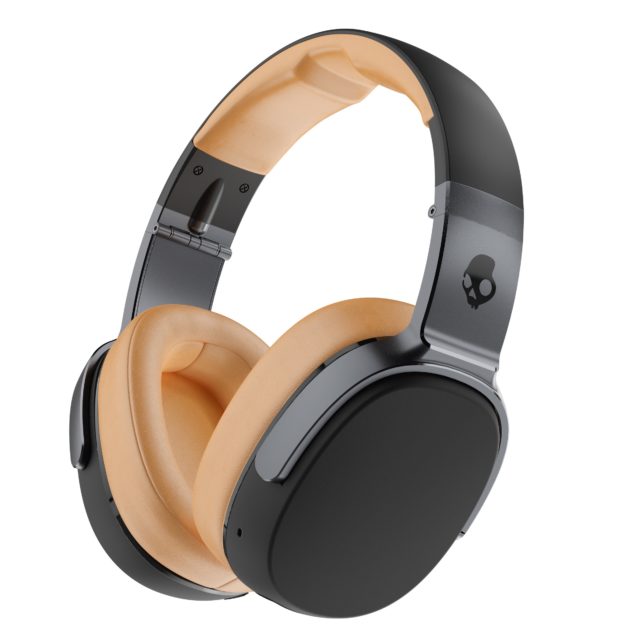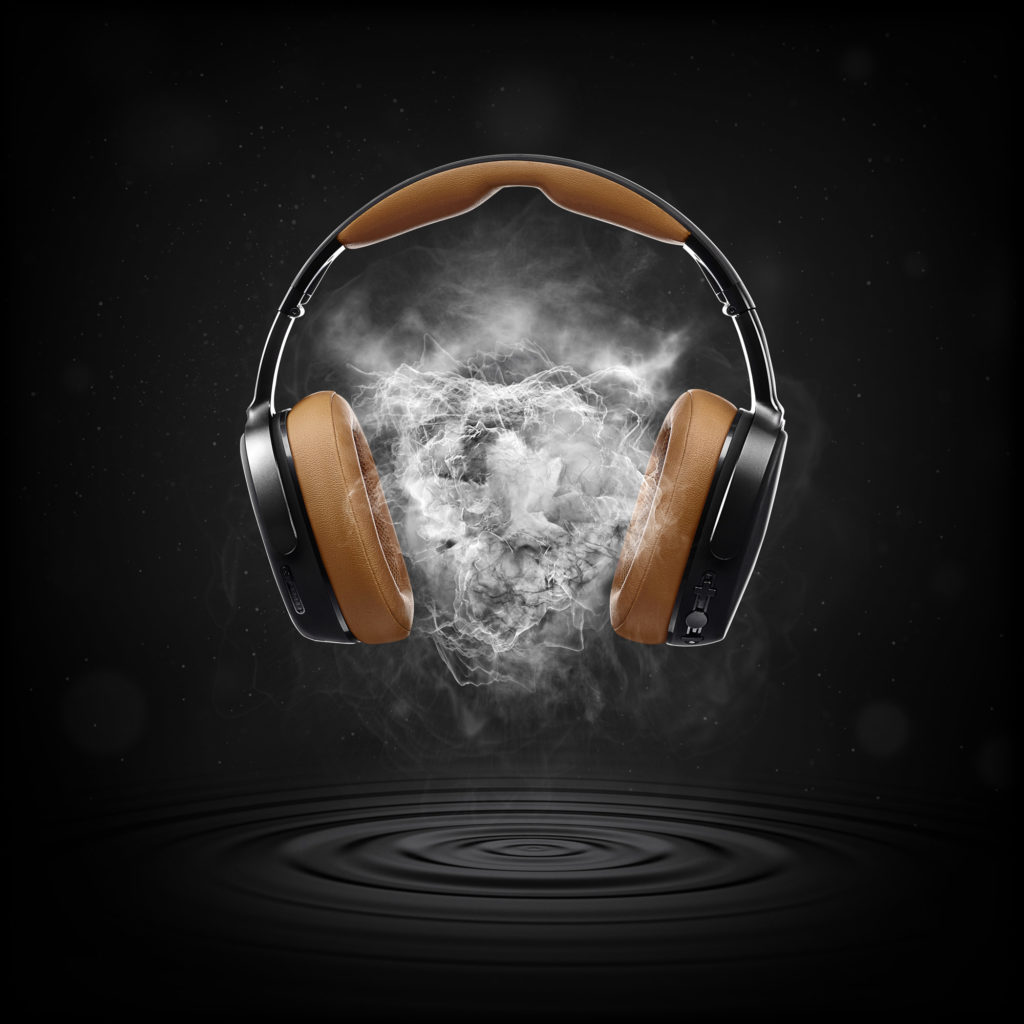The influx of virtual reality advancements over the last handful of years—and over time, for that matter—have been focused on elevating the visual experience. Headphone and audio lifestyle brand Skullcandy wants to dramatically change that and be the catalysts for progressing audio in the VR space by releasing the Crusher VRA headphones.
Slated to hit store shelves early next year, it features stereo-haptic bass drivers that deliver directional bass that you can feel, ferrofluid integration for broader, cleaner bass response, and refined digital-signal processing.
They also introduced Audioscape VR, and audio-first, Hitchcock-like, VR thinking app. The music-generator app accentuates directionality, spatial sound and responsive visuals that reinforce what you’re hearing creates a rich audio-visual experience.
“The content demonstrates the power of designing a VR experience around audio,” Sam Paschel, Skullcandy’s chief commercial officer, told [a]listdaily. “The idea is that we take the visuals and strip them down. The visuals are there only to demonstrate and reinforce what is being created in the audio space. This is game changing. It’s really great and helps us understand how audio can become a bigger part of the VR environment.”
Skullcandy is using the app as an experience and tool to help people understand—and plant the seed—that audio is going to be a huge component in this space and technology. At VRLA in August, Skullcandy further drove that point home by collaborating for the world’s first silent VR rave experience that included 11 artists mixing live music inside VR.
Sam Paschel joined [a]listdaily to talk about how they plan on pioneering audio for virtual reality.

How did Skullcandy decide that VR would be the next great vertical for the company?
VR is aiming to create these incredible, immersive experiences and really transport you with all the upside of having experiences complemented with empathy and entertainment. When you’re only tapping into one sense, it’s different stories. Storytelling is evolving, but no one is introducing additional senses. When you think back to the best memories you’ve had, like your favorite concert, you have an audio experience, a visual experience and you have a psycho-acoustic experience of feeling the vibration of the music on your skin. It’s multisensory. The combination of our technologies make the Crusher VRA headphones the most immersive, and the first true VR audio headphones in the world. We are just trying to put audio at the forefront and be the champions of audio in the VR space. That’s what this is all about.
Why was it so critical for Skullcandy to have ownership in this kind of space? Why was it important for Skullcandy to reach consumers via virtual reality?
This isn’t a critical business unit for us, but it’s incredible trending technology that we see a ton of opportunity in. We see a lot of momentum coming in from the high-end, and the tail-end. I believe in it, we believe in it as an organization, but today this isn’t something that’s driving our business. It’s a passion project. We saw the income from the VR technology wave, and we already had an earlier version of the Crusher that was meant to be about immersion. We wanted to be the most immersive audio company. I don’t want to just recreate sounds that were in a studio in a very antiseptic. I want to put you back in the middle of that concert. I want it to be a little bit grittier, and provocative. As soon as VR started coming in, we saw that this is another massive technology in an area that we know we want to be an innovation leader in—which is immersion and putting you in experiences. It was a natural for us—like no one else is paying any attention to this: how do we create the most immersive audio headphone experience in the world that can be part of the VR revolution?
Is it fair to say you will separate yourself from other industry leaders in audio via VR technology?
That’s the hope. If that’s the outcome, then that’s awesome. I think we’re doing it mostly because we want to help create those experiences that help separate us. We’re early in the game, and that’s great. We’re really here because we want to show the content creators. In the long run, as the Crusher VRA headphones become a wildly successful and commercial product in the VR space, there’s an opportunity for sure. It’s more about showing consumers of what we’re capable of doing technologically as a brand. I think that’s surprising for some people, based on the picture they have of Skullcandy. They don’t know of the capabilities that we have.

What are some of the ways that you’re trying to reach consumers with this Crusher VRA headphones?
This product changed perception and showed people what Skullcandy is capable of—that’s a huge win for us. As far as the market for it—we’re early. I think it’s going to come. I think it also lets us begin to evolve alongside content creators, and even with some of the headset manufacturers as to ‘how do we become a part of this ecosystem, and this family.’ This commercial success of this version of the Crusher VRA headphones isn’t the first key thing. Getting it into a ton of consumers’ hands and attach rates with every time someone buys an Oculus—that’s not how we’re really thinking. It’s about flexing our technological muscle, moving it forward at the cutting edge and really trying to pioneer immersion.
How does VR open the doors for brands to be leaders in the space in their respective businesses?
You look at some of the projections, and how so many headsets could be sold in the next two years, and that’s possible. Not betting the farm on that, though. We have a core business that’s driven off of a lot of other things around music consumption, and regular media. In house, both from the stories we have to tell, how we have to frame it, and the expertise in our engineering teams—mechanical, electrical, acoustics, signal processing—having built this, we’re a fundamentally different organization as well, based on what we learned. All of the learning is going to make our other headphones and audio products much better because we went through a process, and did a real deep-dive. The passion from the product team to create this have been amazing.
How do you think the live music and concert realm while watching in VR is going to grow in the near future?
I see it as an opportunity. The audio, with us in the lead, will get stronger and better. For people who can’t attend, I think it is by far the best and highest fidelity, in every way, proxy for actually going to an event. If you look at, this there’s an entertainment side to what’s coming in VR for sure—to be able to transport you and give you these immersive experiences that you couldn’t get before. There’s also just a massive opportunity in education. It’s an empathy machine that helps you see the world and life through someone else’s eyes. All of that is incredible opportunities. Music is a passion point for us. We’re doing some things with YouTube where we’re going to YouTube studios and recording some music, and have plans to do our own VR or 360-degree content capture as to see how well can you transport people there, and what that’s like.
How do you see the space developing?
I think there’s going to be a lot of evolution in these platforms. This isn’t something we drop in and say ‘we did this VR headphone’ and walk away. It’s something you have to nurture and keep up with the pace of evolution inside of this space. Our goal is to shine a light that multi-sensory is better than just visual. Getting people to start thinking about longer term and the future of the ecosystem. We want to take a leadership position on the audio side. It’s very much a brand way. We think we can sell these and it can very much be a commercial product, but we’re not betting the farm on that.
What are some of the audio challenges VR has to overcome for it to hold its own on that front?
There’s so many. It’s a really complex problem to solve when you talk about recreating real-world audio. If I were going to recreate this conversation perfectly, I’d need to know everything about the size of the room, and the materials in it. Left and right directionality, or 360-degree directionalities. We need to know not just the sound and the room and what was created there and its space, because the visuals need to match the audio. There’s been a ton of investment from large companies in this space, but if you really want to create immersion, what about the other sense in sound? That’s when it is really going to start to take off and that is where we’re going to pioneer.
Follow Manouk Akopyan on Twitter @Manouk_Akopyan

